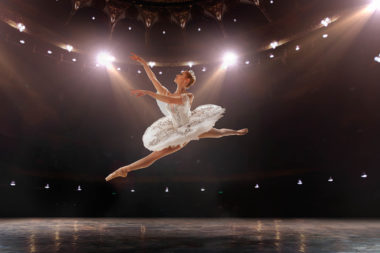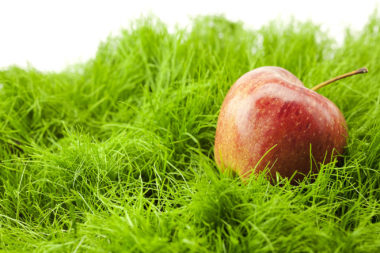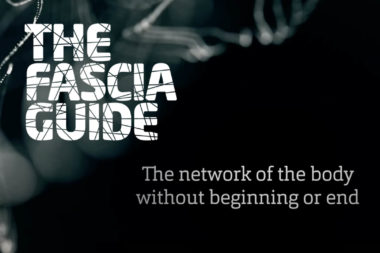

Fascia as a flow – a new way of explaining the body’s function
Join the Fascia Conversation Today!
Beginning to see the body as something that is alive, and not something that is dead, we have been able to notice other things.
Thanks to researchers such as Carla Stecco, Caterina Fede, Neil Theise and Melody Swartz, we can explain the body’s function in a completely different way – compiled by Camilla Ranje Nordin.
Life is motion, life is flow – so how can we explain the body based on life and a flow?
Cells with different tasks in constant interaction
Our body can be described as a collection of cells with different tasks, they are specialized to perform different types of work. For the cells to be able to do their job, transport of substances, into and out of the cells is required. This transport requires water.
The cells also need to communicate with each other, so that one cell knows what the others are doing. They do this in several different ways, usually in combination, via chemical signals with so-called signal substances like hormones and cytokines, and mechanically through so-called mechanotransduction, and through weak electrical signals.
The communication takes place in the space between the cells
For all this to work in multicellular organisms, something is required in the space between all cells, something that also provides a communication path into the cells, via the cellular cytoskeleton, to the cell nucleus that controls the cell. A multicellular organism also needs protection against mechanical loading.
The cells cannot lie like loose balls in a ball pit, they must have a substrate they can attach to. A substrate that can transport the various chemical signal substances, transmit mechanical stimuli and loading, as well as the electrical signals that are created. This substrate is called the extracellular matrix, the matrix that is outside the cells, and is produced by cells in multicellular organisms.
The liquid part of the body is not as easy to see, but there is a continuous flow everywhere
The extracellular matrix consists of a solid, fibrous part and a liquid part, the ground substance.
The solid part consists mostly of collagen fibers that provide strength and are attached to the cells. There are also some elastic fibers, where the tissue needs more elasticity.
The liquid part consists of large molecules, composed of proteins and large carbohydrates, polysaccharides, which bind large amounts of water. This liquid part is the ground substance or interstitial fluid.
This liquid part is not as easy to see as the fibrous part. It is not visible with ultrasound, but I think it is this part that is the most exciting. An important and abundant polysaccharide in this ground substance is hyaluronic acid, which binds large amounts of water.
Here we have the flow in the body, water bounded to hyaluronic acid and other large molecules, which move between collagen fibers and cells!
This flow allows different layers of collagen fibers and tissues to slide friction-free against each other and without restriction. A flow that lacks its own pump! A flow that is completely dependent on motions and the composition and balance in the extracellular fluid. The proportions of the various components determine the properties of the extracellular matrix and vice versa!
If we do not move in harmony and balance, then neither can the fluid flow in the fascia move around in harmony, to all the cells of the body.
The flow tells each cell what is happening in the body
As the flow moves between the collagen fibers, a movement is created in the collagen threads, which in turn pulls on the cells where they are anchored. This feature of the cells is passed from the cell membrane into the cytoskeleton, which in turn pulls to the nucleus of the cell. In this way, the cells receive information about what is happening in the body and genes in the cell nucleus are switched on and off, to control the cell’s production of various substances.
The proportions between the molecules that make up the extracellular matrix are important for the function and properties of the fascia. They are affected by movement, pH, temperature, nutritional status, fluid status, damage and more and can be quickly changed so that the liquid thickens and becomes more viscous, which results in a reduced flow, and impaired slide and glide.
How we move affects the flow – and thus nutrient exchange and waste management
The blood moves in a closed circulation with the heart, among other, as a pump. Loose nutrients, oxygen, etc., are forced out of the smallest vessel, the capillaries, of the blood circulation, into the extracellular matrix to be transported into the cells. The waste from the cells must be transported the opposite way.
For this to work, the tissue fluid in the extracellular matrix needs to have a movement, a flow, that must be kept going with the help of our movements. Without movement in the fluid, the nutrient exchange to the cells is impaired or stopped.
The lymphatic system is also part of the flow of fascia
The lymph transports fats, proteins, immune cells and other large molecules, which cannot enter the bloodstream, from the extracellular fluid back to the bloodstream. Along the way, a large amount of lymph nodes is passed, where white blood cells are accumulated and purify the lymph from any unwelcome intruders.
The lymphatic system lacks a pump, it is an open suction system, similar like the root system of a tree. The lymph is dependent of the movement of the muscles and all the movement in the body, so that the lymph can be efficiently transported further and eventually emptied back into the blood, to the venous system before the right atrium of the heart. Breathing with deep, calm breaths, gives greater movement in the diaphragm and speeds up the lymph flow.
At the same time, there are needed movement and flow in the extracellular tissue to form lymph fluid.
Without movement, the tissue fluid cannot enter the lymph capillaries, because the cells that make up lymph capillaries overlap like tiles, and they are anchored in collagen threads that pull the cells apart and open the lymph vessels as we move. When we are still, they collapse and be closed.
This means that our entire immune system also is dependent on the flow in the fascia, functioning without friction.
An improved fluid flow provides an improved immune system.
The flow is there, even when we are sitting, lying or standing still
Life is flow! As long as we live, we have a flow in the body.
Even if we lie still and do not move so much, it is always a movement in the body that makes our extracellular fluid to flow, even if the flow is less.
If we live, we breathe, the heart beats and the arteries pulsate around the body. The gastrointestinal tract processes the food we eat, and the intestines move.
All of this produces small movements, small pulsations, which cause a flow that pulls on collagen strands and signals to cells, chemical and electrical signals are produced, but it is much less than with more active movement.
The more actively we move, the more efficient the flow in the body. When pulsations and flow have ceased, our bodily life has also ended.
Impaired fluid flow builds up too much pressure in the body, which can have major consequences
When the flow in the fascia stops, it can be local in any part of the body, or in the worst case in a larger area of the body, a higher pressure builds up which impairs cell communication and transport, blood circulation, nerve signals and lymph transport in that area.
The friction between the fascia sheets increases and entire chains of motion are affected. As it deteriorates the slide and glide, muscles have to work harder, and we begin to perform compensatory movement patterns, asymmetric loads and overloads of some body parts and joints.
When we avoid to move some part or any special joint, the flow of fascia stagnates in the immobile body part and aggravates the motion.
We become more and more immobile, get a higher pressure in the fascia, pain receptors become more and more irritated and the pain increases.



















































